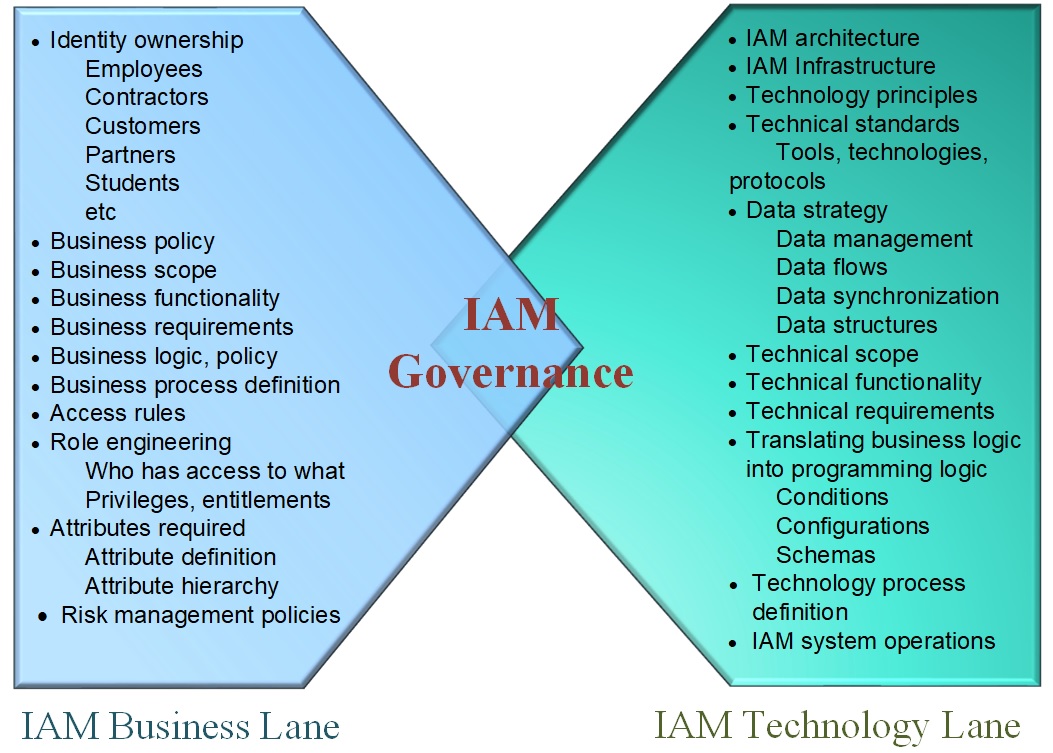Identity Access Management
Identity Access Management Business Process Mapping
Methodology of Best Practices for IAM Governance Processes, Policies and Standards
The methodology for Identity and Access Management (IAM) governance practices involves multiple steps and starts with identifying the sponsor and understanding their specific objectives. This step is important to ensure that the process aligns with the sponsor's expectations and targets.

The next step involves understanding the business process, its purpose, its scope, and the specific needs of the business users. This is crucial as it forms the foundation of the entire process, allowing all subsequent steps to build upon it.
The education process forms the backbone of IAM governance, beginning with the sponsor and expanding to other involved parties. It emphasizes understanding the benefits and requirements of process mapping, which is a powerful tool for visualizing and understanding complex processes.
Stakeholders play a crucial role in the IAM governance process. These are the key users or individuals who will be significantly affected by the creation of the process map. Identifying them and understanding their roles and needs can ensure that the process is designed to meet these needs.
Setting up a Governance Steering Committee with representatives from key sponsors and stakeholders is another important step. This committee guides the direction of the process and ensures that it aligns with the interests of both the sponsors and stakeholders.
Alongside the Steering Committee, a technical committee for the process should also be formed. This committee focuses on the technical aspects of the process, ensuring that it is designed efficiently and effectively.
Process maps require proper management, including determining their custodian, the location of their repository, and the process for their maintenance. This ensures that the maps are kept up-to-date and accessible.
The next step is the creation of the initial enterprise process knowledge map. This map provides an overview of the entire process, allowing everyone involved to understand how the different elements interact with each other.
When forming the process mapping team, the size of the team will depend on the scale of the mapping effort. For smaller efforts, a small team might suffice, but larger efforts may require a larger team with more specialized roles.
The mapping process begins with a restricted area that holds substantial business and IT relevance and importance. The aim should be to deliver an early "quick-win" to build momentum and support for the project.
Engage with organization's acknowledged subject matter experts, accrediting them on the map to boost its credibility and instill confidence in the users.
The initial map should cover a broad scope over depth to capture the extent of the process. Once the end-to-end map is complete, further detailing can be added. This process may span one to three months, depending on the complexity of the business process.
Following the completion of the initial maps, planning should begin for extended process mapping throughout the enterprise. Amplify the "quick-win" stories to get wider acceptance and support.
Lean towards the energy of motivated organizations. Engage enthusiastic participants who are keen to contribute. Involve as many people as possible from these organizations in the mapping or validation process to facilitate acceptance. This wide-spread involvement aids in achieving a more accurate map, eventually leading to a collective understanding of the process, eliminating distortions and deviations.
Process maps offer a visual and intuitive understanding of the process and are accessible to a large number of employees. They provide the enterprise with the ability to see the "big picture" and encapsulate context for comprehensive knowledge sources. Process mapping illuminates the relationships between key components of business and IT, promoting a more comprehensive understanding and alignment at all organizational levels.
Once the process maps are completed, they are not shelved. They are actively used to design the enterprise Service Oriented Architecture, playing a crucial role in the delivery of vital services. This ensures that the effort invested in creating these maps yields tangible and beneficial results for the organization.